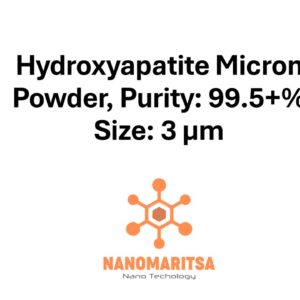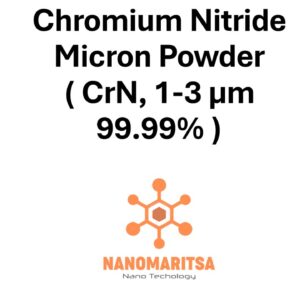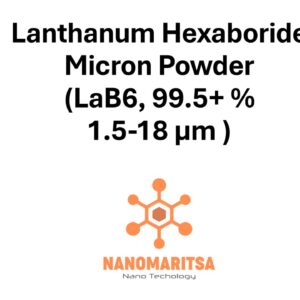1. Key Properties
Thermal Stability Maintains structural integrity and performance at high temperatures, ideal for heat-intensive applications.
High Purity (99.95%) Guarantees minimal impurities, ensuring reliability in precision applications.
Electrical Conductivity Provides efficient conductivity, making it suitable for electronic and energy applications.
Wear Resistance Combines hardness and durability, offering long-lasting performance in abrasive environments.
Chemical Resistance Exhibits stability against chemical degradation, suitable for harsh operating conditions.
Particle Size (1–3 µm) Fine particle size enables uniform distribution and enhanced performance in advanced manufacturing.
2. Applications
Electronics and Semiconductors Used in high-performance substrates, insulators, and conductive layers for advanced devices.
Energy Storage Systems Supports the development of battery electrodes and supercapacitors with enhanced performance.
Thermal Management Ideal for heat sinks, thermal interface materials, and components requiring efficient heat dissipation.
Protective Coatings Utilized in wear-resistant and corrosion-resistant coatings for tools, molds, and industrial machinery.
Aerospace Components Suitable for lightweight, durable parts exposed to extreme temperatures and mechanical stresses.
Catalysis and Chemical Processing Acts as a catalyst support material in chemical and industrial processes.
3. Advantages
Superior Thermal and Electrical Properties Ensures reliable performance in electronic and thermal management applications.
High Purity and Consistency Provides dependable results in advanced manufacturing and research.
Enhanced Durability Offers wear and corrosion resistance, extending the lifespan of components.
Versatility Combines thermal, mechanical, and chemical properties for a wide range of industrial applications.
Fine Particle Size Enables uniform and efficient processing in powder-based manufacturing techniques.
4. Recent Trends and Research
Advanced Energy Systems Research focuses on optimizing AlNC for use in high-performance battery electrodes and energy storage devices.
Thermal Management Solutions Studies aim to enhance its role in heat dissipation and thermal interface materials for electronics.
Semiconductor Innovations Efforts are directed toward integrating AlNC into next-generation electronic devices and substrates.
Wear-Resistant Coatings Developments are improving the application of AlNC in protective coatings for industrial tools and equipment.
Nanotechnology AlNC is being explored at the nanoscale for advanced applications in materials science and catalysis.
5. Future Prospects
Electronics and Semiconductors AlNC will continue to play a critical role in the miniaturization and efficiency of electronic devices.
Energy Storage and Conversion Its application in batteries and energy systems will expand with the demand for sustainable and high-performance energy solutions.
Aerospace and Defense Lightweight and durable components made from AlNC will support advancements in aerospace engineering.
Industrial Coatings The use of AlNC in wear-resistant and corrosion-resistant coatings will grow in various industrial sectors.
Green Manufacturing Sustainable production and recycling of AlNC powders will contribute to eco-friendly technologies and practices.
With its 1–3 µm particle size, 99.95% purity, and outstanding thermal, electrical, and mechanical properties, Carbon Aluminum Nitride Micron Powder (AlNC, 1–3 µm, 99.95%) is a versatile material for cutting-edge applications in electronics, energy, and industrial manufacturing. Its adaptability and high performance make it essential in modern engineering and advanced technology.






